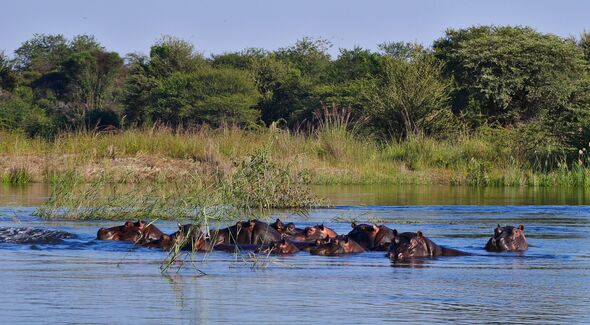A country in Africa owns a bizarre strip of land that looks like a cartographer’s hand slipped when they were drawing the map.
This anomaly in Namibia is actually the result of a deal which saw Great Britain get one over on Germany, before the outbreak of the First World War. The Caprivi Strip is a 280-mile-long corridor jutting out of the northeast corner of this African nation, across the north of Botswana.
This area is home to about 100,000 people, is rich in natural wildlife, and has mineral resources. However, it came into existence because of a land deal that many believe saw the UK hoodwink Kaiser Wilhelm II’s Germany.
Caprivi was named after a German Chancellor. Leo von Caprivi was in office between 1890 and 1894 – when Namibia was still a German colony and part of German South West Africa
He negotiated the acquisition of the land in 1890 in a deal with Great Britain, which was ruled by Kaiser Wilhelm’s grandmother, Queen Victoria. At that time, the British Empire controlled much of the rest of Southern Africa as part of its empire.
Kaiser Wilhelm II’s Empire wanted the deal so Germany could secure access to the Zambezi river. They wanted a route to Africa’s east coast, where the colony of German East Africa (now part of Tanzania) was situated.
The Heligoland-Zanzibar Treaty of 1890 saw Germany give its interest in the spice island of Zanzibar to the UK – in return for the Caprivi Strip and the island of Heligoland in the North Sea, which were both British possessions. However, the Zambezi River later proved to be unnavigable – and it did not provide access to the Indian Ocean the Germans longed for.
This was due to the presence of various waterfalls – including the mighty Victoria Falls. It’s thought that Britain was aware of this fact during the negotiations but didn’t disclose this knowledge.
The land Caprivi acquired was remote, inaccessible during the rainy season – and of no use whatsoever to Germany. A mineral prospecting expedition in 1909 proved unsuccessful, and the Kaiser contemplated exchanging the strip for some other British territory, such as Walvis Bay – which today is Namibia’s second-largest city and a safe haven for sea vessels because of its natural deep-water harbour.
However, Britain kept Walvis Bay and, in 1910 – just four years before the First World War erupted – it made it part of its self-governing Cape of Good Hope colony. This was just before the area formally became the independent British colony of South Africa on May 31 of that year – just weeks after the death of Britain’s King Edward VII.
He was succeeded by his son, King George VI who, just four years later, would find himself at war with his first cousin, Kaiser Wilhelm II. Another of George’s first cousins – Tsar Nicholas II of Russia – was among the allies who fought against Wilhem’s Germany and the other Central Powers.
Germany lost control of its South West Africa colony during the first world war, in 1915, when it was invaded by the Western Allies in the form of South African and British forces. And – after a conflict that killed around 20 million people and left Europe in ruins – Germany officially recognised the loss of this territory with the 1919 Treaty of Versailles.
What is now Namibia was taken over by the Union of South Africa, which remained part of the British Empire until 1931. The territory was then administered as South West Africa under a League of Nations mandate, as part of South Africa.
Namibia gained independence from South Africa on March 21, 1990. To this day, it retains the Caprivi Strip – as a result of the UK’s land swap with Germany.
